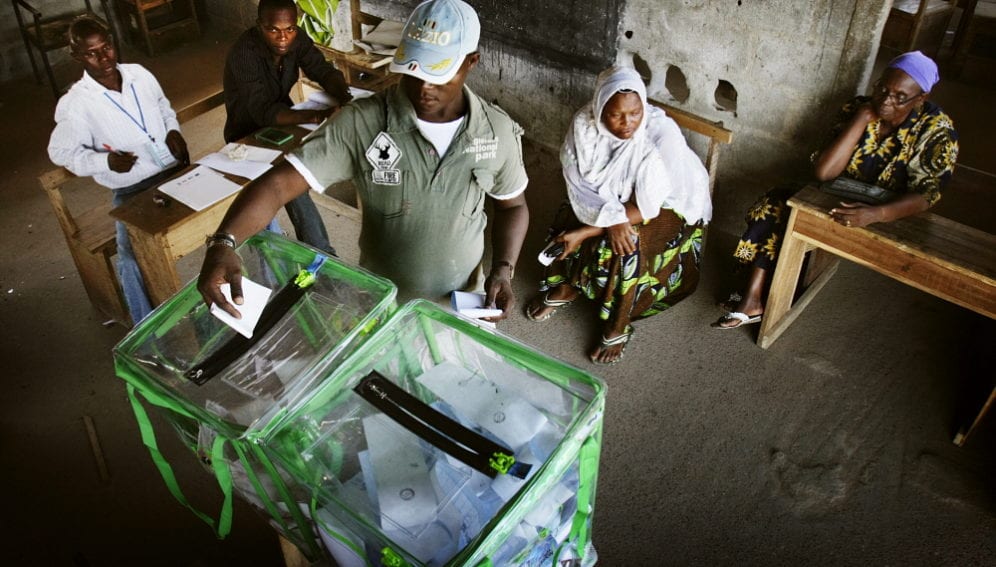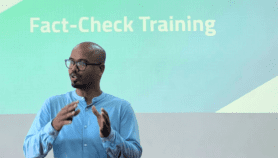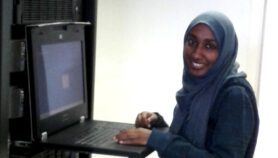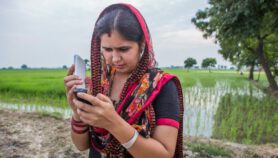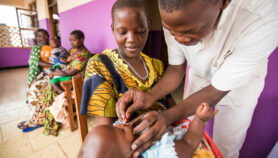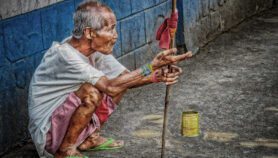By: Aamna Mohdin
Send to a friend
The details you provide on this page will not be used to send unsolicited email, and will not be sold to a 3rd party. See privacy policy.
Nigeria’s elections, which were scheduled for 14 February, have been postponed for six weeks, with the government citing security concerns posed by insurgent group Boko Haram. But civil society groups have criticised incumbent President Goodluck Jonathan for using the group’s attacks as a pretext to halt the electoral process. Pre-election polls suggested his centre-right Peoples Democratic Party was facing defeat by the All Progressives Congress, a social democratic party led by Nigeria’s former military ruler Muhammadu Buhari.
One organisation condemning the postponement is the Transition Monitoring Group (TMG), a Nigerian election observation organisation. SciDev.Net spoke to Armsfree Onomo, TMG’s media manager, about the science of elections, and the role mobile technology can play in monitoring due process.
What’s the history of TMG in Nigeria?
TMG was established as a coalition of civil society organisations in 1998. At that time, the military was in charge of transitioning to civil rule after three decades of dictatorship. The same civil society organisations had been at the vanguard of the struggle against the military. There was a need to keep an eye on the democratic process. It was only logical that, as democracy was sprouting, the very actors who fought to bring it to reality should also be engaged in nurturing it.
Is there a movement in Nigeria to make elections fairer and more credible?
Yes, especially after the general elections of 2007, which were blighted by large-scale irregularities and fraud. This push for transparent polls got a boost from the Occupy Nigeria movement that convulsed the nation after fuel subsidies were removed in January 2012.
The electoral architecture still puts an enormous amount of power in the hands of the ruling party when it comes to appointing electoral overseers. Then the election management bodies of Nigeria’s Independent National Electoral Commission (INEC) have to wait on a partisan executive for funds to carry out operations. So there is still a lot to be done to ensure the electoral system is fair to all parties.
Other than TMG, what organisations exist to verify election results?
No other organisation has the technical capacity to verify the official results of elections in Nigeria. The Quick Count method was first used by the INEC in 2011 to observe and verify the 2011 elections. Several state governorship elections have also used Quick Count.
What is Quick Count and how does it work?
Quick Count, also known as Parallel Vote Tabulation, is a scientific method for observing elections using nonpartisan citizen observers, who are deployed to a representative, random sample of polling stations. The observers report via coded text messages to the government’s National Information Centre, where data is analysed by trained statisticians.
The highly trained observers witness election day processes, such as poll officials’ arrivals, accreditation, vote sorting, counting and the announcement of results. There are Quick Count observers across all of Nigeria’s 774 local government areas. However, this does not mean we are present at all of the polling stations.
How does mobile technology help with this?
Quick Count is where information technology and statistics meet. The citizen observers supply a representative random sample of data. From this sample, estimates of voting behaviour are drawn and compared with the official results. Mobile technology is a crucial aspect. The observers in the field send coded text messages so a third party would not be able to understand what is being done. This helps guarantee the safety of the observer. It also conveys the data in a neat way.
The Quick Count approach contrasts sharply with traditional observation methods, where observers have no rigorous yardstick. Without such yardsticks, it is possible for the traditional observer to rove through several polling stations on election day because there are no demands for rigour and precision. With Quick Count, however, observers do not rove, they spend the whole of election day at their assigned polling station.
Quick Count was first used in the Philippines in 1986 to stave off the dictatorship of Ferdinand Marcos. Since then, it has been widely used in different parts of the world, including Malawi, Kenya, Ghana, Zambia, Zimbabwe and, more recently, in the Tunisian general elections.
Have you been monitoring the election build up?
In the past, Quick Count data showed the vote share of the political parties, polling station opening times and voter accreditation. In 2015, we will also observe the pre-election period so we can provide an early warning to help prevent violence.
We will send observers to each of the 774 local government areas to monitor a range of issues. Observers will use a pre-election checklist to answer a set of questions. They will then send the answers via coded text messages to the database, from where the analysis is done. Recommendations are then made to push for long-term electoral reforms. Reports from our local partners have so far raised several issues, such as hate speech, vandalism, migration and population movements, and voter card buying and selling.
What is the biggest challenge you will face on election day?
Ensuring effective coordination of observers so that they are in their preassigned polling stations in time for observation. It creates huge problems if they don’t get there in time.
Do you think the Quick Count approach is effective at reducing corrupt practices?
This method is effective as it places a second eye on the electoral process through the observers. Officers of INEC, including its chairman Attahiru Jega, have praised TMG for the introduction of this methodology, which they say has helped keep them on their toes.
What methods do you use to inform the public?
We have been using traditional and social media to spread the messages of our civic education drive. Radio has been particularly instrumental in pushing TMG messages to a broad variety of audiences. Our Quick Count Half Hour, a radio broadcast on Radio Nigeria, reaches audiences across the country.
Where do you hope TMG will go in the future?
We hope to achieve bigger milestones in deepening democracy in Nigeria. There is still a lot of impunity in the Nigerian system. We hope to be able to have a better electoral system so that there will be democratic accountability throughout the electoral process. We also want to build capacity and get to a point where TMG’s local partners will be strong enough to cascade what we are doing at the national level to the local levels.
Q&As are edited for length and clarity.


